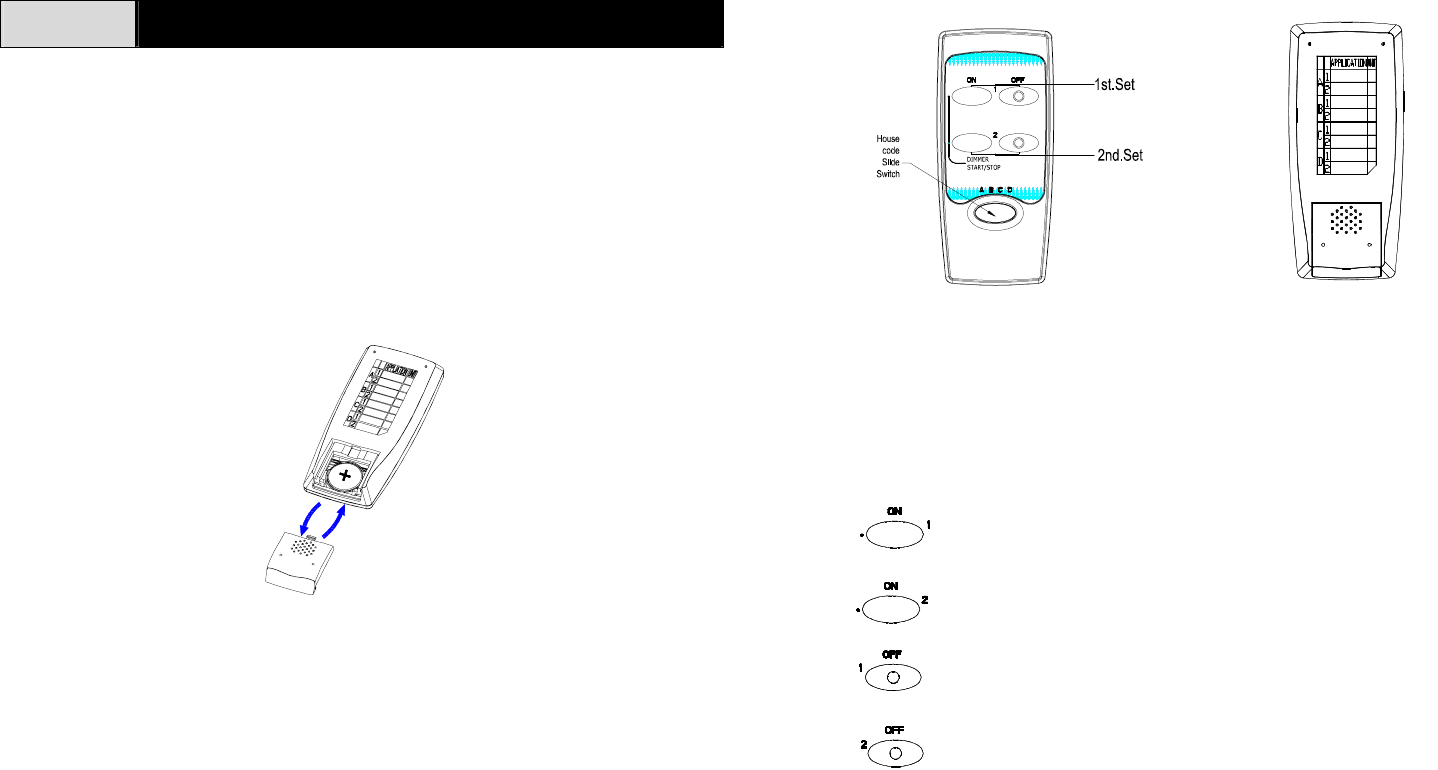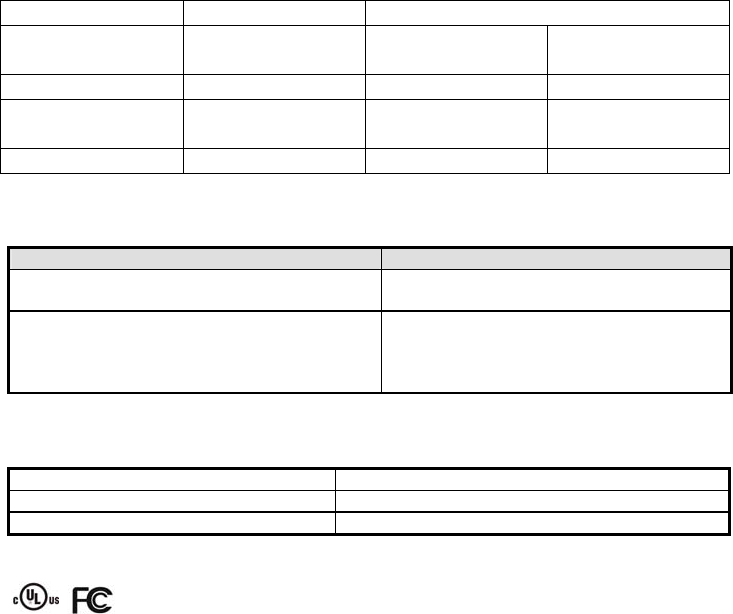Everspring Industry Co B410R Remote Control User Manual B410R manual
Everspring Industry Co Ltd Remote Control B410R manual
Users Manual

1
B410R TRANSMITTER
The Transmitter is the core of the system and controls On/Off status of ON/OFF
Receiver (B410N) and On/Off and Dim/Bright status of Dimmer Receiver (B410D)
for a maximum of two pieces in one group. By adopting the house code to
differentiate the specific group, it can control the ON/OFF Receiver (B410N) and
Dimmer Receiver (B410D) for a maximum of 8 pcs.
1. Inserting the battery
(1) Remove the battery cover. Fit the 3V Lithium battery in the compartment
provided with +v terminal facing upwardly. (Fig. 1)
Fig. 1
(2) By pressing any key, the red LED will illuminate, which implies that the battery
has been inserted properly.
(3) Replace the battery cover.
2. Setting the House Code
The Transmitter incorporates 4 buttons and a 4-position house code slide switch.
In the front of the casing, there is a 4-position house code slide switch, ranging
from A to D. (Fig. 2)
When switching to the “A” position, you can be allocating two pcs of lighting
fixtures plugged into the respective receiver as one group, while to the “B”
position, another two pcs of lighting fixtures can be grouped. The max.
controllable lighting fixture is 8 pcs.
Fig. 2 Fig. 3
Note: Write down each designated lighting fixture in each group by adopting the
sticker affixed on the rear cover. (Fig. 3)
4 buttons are divided into two sets, consisting of one pc each of On and Off
button. It allows you to control two pcs of lighting fixtures in one group. Pressing
the following buttons will emit either On or Off signal.
ON signal
ON signal
OFF signal
OFF signal
The 4-position house code slide switch coupled with the above mentioned 4
buttons is configured for 8 different ID codes.
3. Emitting the ID code
In order to communicate with the ON/OFF Receiver (B410N) and Dimmer
Receiver (B410D), it is essential that the same ID code is used between the
Receiver and Transmitter.

2
The Transmitter is designed to emit the ID code to the ON/OFF Receiver (B410N)
and Dimmer Receiver (B410D). The procedure of learning the ID code by the
Receiver is clearly described on the Receiver’s manual.
4. Operation
By making use of 4 buttons, the Transmitter is able to control the ON/OFF
Receiver (B410N) and Dimmer Receiver (B410D) as follows:
Transmitter ON/OFF Receiver Dimmer Receiver
1-ON ON ON Dimmer ON,
Start/Stop
1-OFF OFF OFF Dimmer OFF
2-ON ON ON Dimmer ON,
Start/Stop
2-OFF OFF OFF Dimmer OFF
5. Troubleshooting
Symptom Recommendation
Press button, LED not illuminating 1. Reverse battery polarity
2. Run out of battery
No response with the Receiver 1. Check if learning the ID code has
been processed
2. Check if the procedure of ID code
learning is correct
6. Specification:
Battery Type CR2032 3V x 1 pc
Transmitting Range 30 meters min. (in an open space)
Frequency Range 314~316 MHz
**Specifications subject to change and improvement without notice. INB410REVSP0E1A
Mobile of end product
Federal Communication Commission Interference Statement
This equipment has been tested and found to comply with the limits for a
Class B digital device, pursuant to Part 15 of the FCC Rules. These
limits are designed to provide reasonable protection against harmful
interference in a residential installation. This equipment generates, uses
and can radiate radio frequency energy and, if not installed and used in
accordance with the instructions, may cause harmful interference to radio
communications. However, there is no guarantee that interference will
not occur in a particular installation. If this equipment does cause
harmful interference to radio or television reception, which can be
determined by turning the equipment off and on, the user is encouraged
to try to correct the interference by one of the following measures:
- Reorient or relocate the receiving antenna.
- Increase the separation between the equipment and receiver.
- Connect the equipment into an outlet on a circuit different from that to
which the receiver is connected.
- Consult the dealer or an experienced radio/TV technician for help.
This device complies with Part 15 of the FCC Rules. Operation is subject
to the following two conditions: (1) This device may not cause harmful
interference, and (2) this device must accept any interference received,
including interference that may cause undesired operation.
FCC Caution: Any changes or modifications not expressly approved by
the party responsible for compliance could void the user's authority to
operate this equipment.
Important Note:
FCC Radiation Exposure Statement:
This equipment complies with FCC radiation exposure limits set forth for
an uncontrolled environment.
To maintain compliance with FCC RF exposure compliance requirements,
please avoid direct contact to the transmitting antenna during transmitting.
This equipment should be installed and operated with minimum distance
20cm between the radiator & your body.
This transmitter must not be co-located or operating in conjunction with
any other antenna or transmitter.